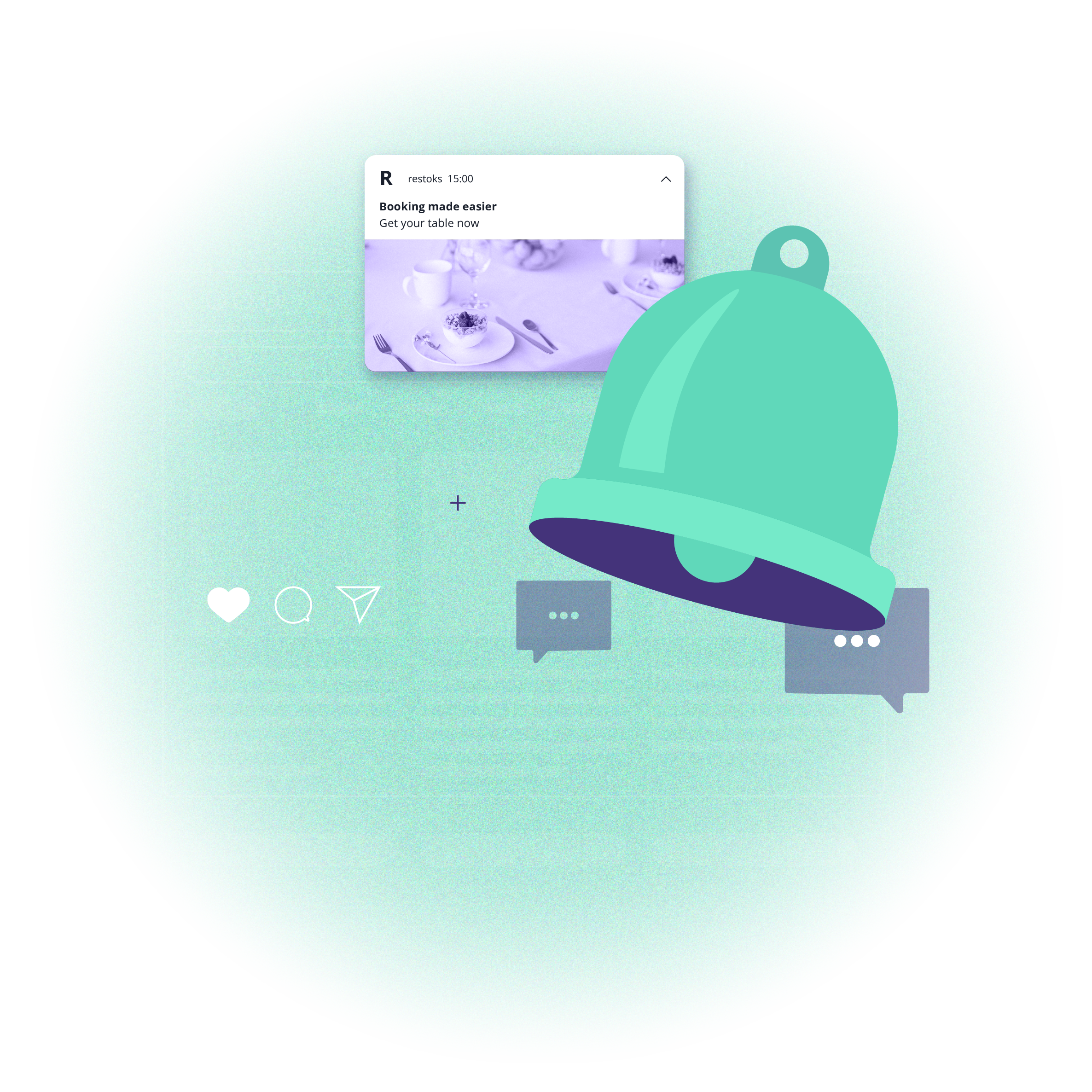Omnichannel experience in fashion e-commerce
 Aleksandra Kozioł
Aleksandra Kozioł
Omnichannel is widely used in all e-commerce sectors and niches, but there is one sector that especially benefits from this strategy and uses it to get to customers with a more comprehensive and appealing message. In this article, we are going to see how fashion e-commerce uses omnichannel to create a perfect customer experience.
We all know what omnichannel is all about. It’s a relatively new marketing and sales approach based on using multiple channels and integrating them into one consistent message that addresses customer needs and expectations. As a result, online stores adopting the omnichannel approach use different communication channels, introduce new solutions and services, and are always eager to listen to customers, observe market trends and respond to them.
This strategy is very effective, primarily because that's what customers expect. Omnichannel is convenient and quick. Do you want to browse new products, but you don't want to open your laptop? There you go – just use a mobile app on your smartphone. Do you want to order something online, but you don't want to wait for the courier? Nothing easier; just select the click & collect option or order delivery to a nearby parcel locker. Do you want to ask about a product that you've just seen on Instagram, but you don't want to hang on the phone? Use a chatbox and get your question answered within a few moments.
According to McKinsey, the average omnichannel customer purchases 70% more often than an offline-only shopper and reports spending more than $2,000 on apparel each year.
How does omnichannel look like in fashion e-commerce?
In 2019, McKinsey & Company published an in-depth study on omnichannel in fashion. According to them, there are five essential areas that shape the way omnichannel looks in this sector. These are as follows:

Image source: McKinsey
Let’s take a look at each of these five aspects of fashion omnichannel.
EXPERIENCE
That’s probably the most important element and a valid opportunity to differentiate from your competitors. Fashion stores can do a lot to increase CX. For starters, we have to mention different options to see a product. High-quality photos are just a start. To show products in the most beneficial way possible, you should also present them on your social media, with Instagram being the most important platform. 30% of Instagram users have bought something they first spotted on this platform. And over 70% of customers say that seeing Instagram photos of a product increases the chances of buying it [Yotpo].
One of the companies that know how to benefit from social commerce is the British retailer, Oasis. They run almost 100 brick-and-mortar stores, but they thrive in the online environment. They frequently share inspirations and ideas on how to combine clothes. Their Instagram profile is very active and has almost 450,000 followers.

Secondly, you have to take care of customer service. Introduce personalization and segmentation to your store. Personalized product recommendations are immensely important and can help you sell many products and increase AOV (average order value).
Thirdly, provide at least several communication channels. Email, phone, and chat should be sufficient. However, remember about 24/7 service that's possible thanks to intelligent assistants, i.e., chatbots. People are already used to them and willingly use them in communication with brands.
SERVICE
Your store should provide all the important services and features that streamline the purchasing process. For starters, make sure you are present not just in your store but also on marketplaces, with Amazon being the most important one. Loyalty programs and apps are also much appreciated in this sector.
For example, the Nike loyalty program comes with many different benefits (e.g., free shipping, special events, additional customization options, and workout plans). That’s what makes it attractive.

Image source: Nike
The logistics issue is also of paramount importance. Omnichannel means a seamless experience in both the online and offline world. To make it efficient, you have to integrate logistics procedures so that users buying products through online channels and brick-and-mortar stores get the same sterling experience. Here, cooperation with logistics operators can come in handy.
The last element that needs mentioning revolves around staying in touch with your customers. You can’t expect them to remember you after just one purchase. Make sure you have at least one effective way of maintaining contact with both current and potential customers. Here are a few ideas:
Social media – again, especially Instagram comes in handy here. The vast majority of customers visit this social media platform every day. When they see you in their feed, they will be more likely to pay you another visit.
Newsletters – creating a loyalty program or a VIP club means that you can create a special mailing list with new offers, discounts, and other incentives. Ensure the newsletters that you send are engaging and valuable from your customers’ perspectives.
Push notifications – that’s where we step in. Thanks to push notifications, you can stay in touch with customers via an Internet browser (web push) and a mobile app (mobile push). Push notifications can be used to rescue abandoned charts, inform about new products and discounts, distribute promo codes and vouchers, and more. Take a look at our list of use cases in e-commerce – many of them can be adapted to the needs of fashion stores! For example, see how that works concerning cross-selling, a versatile and effective technique encouraging customers to buy more products:

ASSORTMENT
Omnichannel in fashion also refers to your assortment. Stores that want to be truly omnichannel need a broad offer. Of course, we’re not saying here that you should sell clothes and garden hoses, but you ought to make sure that all the vital brands and products within your niche are available in your store. Bear in mind that Zalando, the biggest fashion marketplace ever, has over 2,000 brands in their offer, and for a reason. Moreover, you ought to provide all the relevant information about the products that you offer, their parameters, and sizes.
Secondly, it’s important to offer different ways of discovering products in your store. Online stores use different techniques here, but we’d like to turn your attention to a specific one – augmented reality (AR). For obvious reasons, you can’t try on any apparel that you see online, but you can get close to that, thanks to AR. See how Nike solved the problem of selecting the right shoe size with their mobile app using the AR feature:
CONVENIENCE
As we told you earlier, omnichannel has to be convenient. This means that you should offer all the important features and services that streamline the purchasing process. That relates to:
Payment methods (especially mobile payments, digital wallets, quick online transfers, and BNPL)
Delivery options (click & collect, parcel lockers, courier, express delivery)
The purchasing process (customers should be able to place an order without the need to create an account. Additionally, the process itself should be quick, easy, and flawless!)
Quick assistance and service (that’s where the chatbox and chatbots step in to up your game)
Post-purchase service (including parcel tracking, easy returns, vouchers for next orders, etc.)
Here, again, Zalando is a perfect example. Their return process is quick and easy. Plus, customers have 100 days to return unworn clothes. And when they decide to return something, they can use the closest EVRI ParcelShop[4].
PRICES
Yes, the last element is also incredibly important. People use online shopping, i.a., because it allows them to find the best deals. If you want to thrive online and make the most of the omnichannel model, you have to offer prices that are attractive from your customers' perspectives. If you have a hard time adjusting prices in your store to the optimal level, you can use a pricing platform such as Dealavo or Price2Spy. With the help coming from that software, you can monitor prices in your competitors’ stores and even automate pricing in your business.
Omnichannel in fashion e-commerce: Summary
As you can see, adapting your store to the omnichannel model can be tricky. There are many elements to consider and changes to implement. Perhaps you’ll even have to modify the way your store works. But in the long run, such a change will surely turn out to be positive. Offer your customers multiple ways to communicate with you and to discover your offer. Look for new features and technologies to make online shopping more seamless and convenient. And integrate everything you do in one unified message that puts emphasis on customer satisfaction. That’s the recipe for success in fashion e-commerce. Of course, easier said than done. That’s why you need a well-thought-out strategy and a clear plan on what to do, when, and how.
And if you're looking for an additional way to stay in touch with customers, take a look at our offer. We encourage you to give the web push a shot. Many of our clients say that this form of communication is convenient, quick, and effective. Push notifications work especially well in the e-commerce industry. If you’d like to know more, contact us at [email protected] and we will return back with all the details!

Content Specialist @PushPushGo
Editor and writer. She is interested in media and new technologies.
Try PushPushGo to engage and connect with your audience.
Create an account and start testing!

-infv1ikejk.webp)



